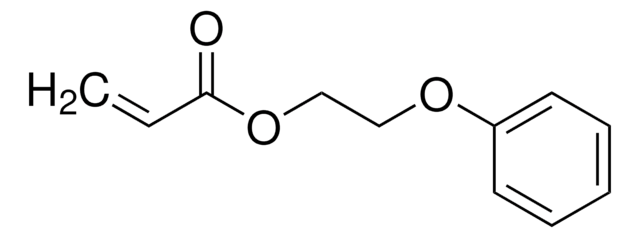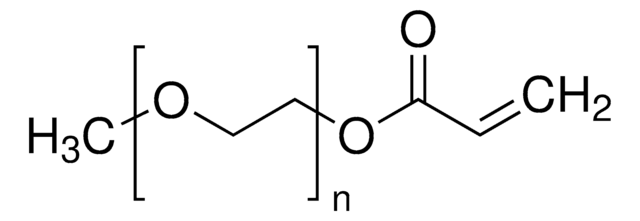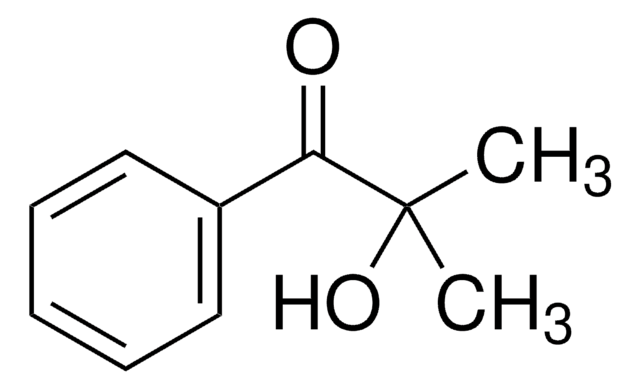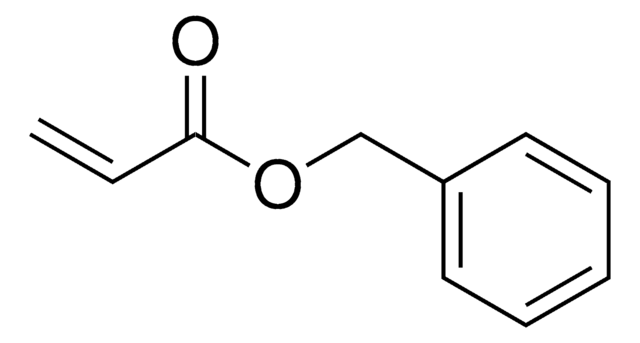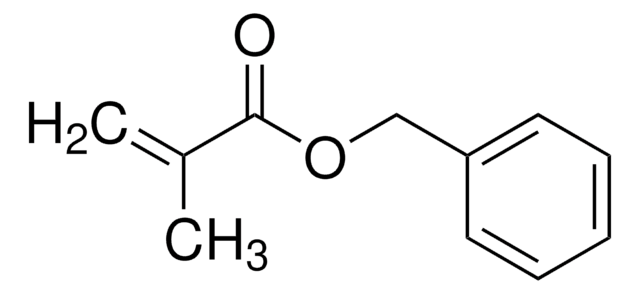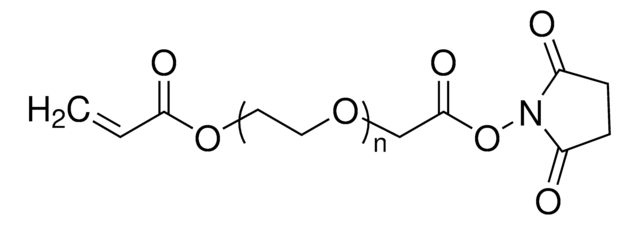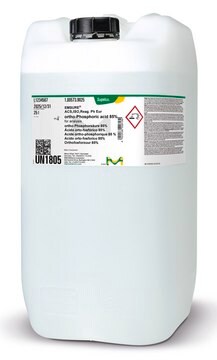407348
Poly(ethylene glycol) phenyl ether acrylate
average MN 324, acrylate, phenoxy, 150-350 ppm MEHQ as inhibitor
Synonym(s):
Ethoxylated phenyl acrylate, Phenol ethoxylate acrylate, Polyethylene glycol
About This Item
Recommended Products
Product Name
Poly(ethylene glycol) phenyl ether acrylate, average Mn 324, contains 150-350 ppm MEHQ as inhibitor
form
viscous liquid
Quality Level
mol wt
average Mn 324
contains
150-350 ppm MEHQ as inhibitor
refractive index
n20/D 1.502
bp
134 °C/1 mmHg (lit.)
density
1.127 g/mL at 25 °C
Ω-end
phenoxy
α-end
acrylate
SMILES string
C=CC(=O)OCCOCCOc1ccccc1
InChI
1S/C11H12O3/c1-2-11(12)14-9-8-13-10-6-4-3-5-7-10/h2-7H,1,8-9H2
InChI key
RZVINYQDSSQUKO-UHFFFAOYSA-N
Looking for similar products? Visit Product Comparison Guide
Related Categories
General description
Signal Word
Warning
Hazard Statements
Precautionary Statements
Hazard Classifications
Eye Irrit. 2 - Skin Irrit. 2 - STOT SE 3
Target Organs
Respiratory system
Storage Class Code
10 - Combustible liquids
WGK
WGK 3
Flash Point(F)
235.4 °F - closed cup
Flash Point(C)
113 °C - closed cup
Personal Protective Equipment
Choose from one of the most recent versions:
Already Own This Product?
Find documentation for the products that you have recently purchased in the Document Library.
Customers Also Viewed
Articles
The manufacture of monomers for use in ophthalmic applications is driven by the need for higher purity, improved reliability of manufacturing supply, but ultimately by the need for the increased comfort, convenience, and safety of contact lens wearers. Daily wear contact lenses have the potential to fill this need for many customers; however, their widespread use is constrained by higher costs compared to weekly- or monthly-based lenses. New approaches that improve cost structure and result in higher quality raw materials are needed to help make contact lenses more affordable and accelerate growth of the contact lens market.
Our team of scientists has experience in all areas of research including Life Science, Material Science, Chemical Synthesis, Chromatography, Analytical and many others.
Contact Technical Service